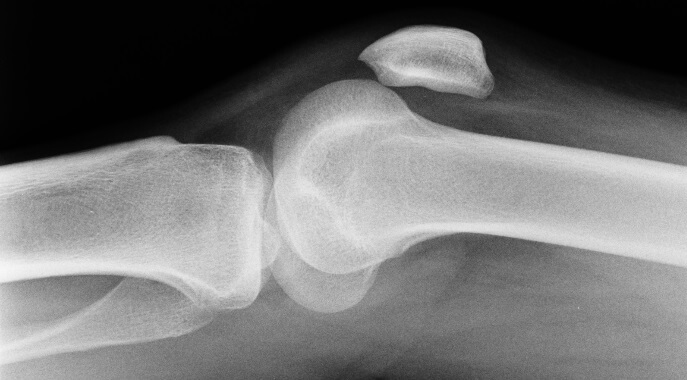Patella (Knee cap) dislocation
HOW TO TELL IF SOMEONE HAD KNEECAP DISLOCATION?
If the kneecap comes out of groove, it is described as patella dislocation.
Almost invariably, you will remember sporting injury, tackle or a twisting injury when dancing or jumping. Knee will swell up straight away and is extremely painful.
Knee can look deformed with the kneecap sitting on the outside of thigh bone (femur).
SO WHAT STOPS PATELLA DISLOCATING NORMALLY?
Well, the shape of the thighbone and patella with surrounding soft tissue balance the patella in the groove of thighbone. The system works like a lever and pulley as the patella glides in the groove on bending and straightening of the knee.
WILL I SUFFER FROM PATELLA DISLOCATION AGAIN? AND AGAIN…
Most of the patients recover well and do not have further dislocation.
However if you are unlucky and have either:
- High patella
- History of previous dislocation
- Shallow groove for the patella (so it more easily pops out of place)
- Abnormal alignment of patella (so it does not track in a straight line)
- Ligament laxity
Then the chances of further dislocation are higher. I can arrange further investigations and explain these to you.
WHAT TREATMENT DO I NEED?
Good news is that if it is your first dislocation, you do not need operation…well, most of the time!
Kneecap can be easily maneuvered into place by gently straightening the knee and then applying mild pressure to the outer border of patella. If some time has passed since the injury, the patient may need some painkillers or gas and air before resetting (reducing) the patella.
You may need a splint for two or at the most three weeks and physiotherapy.
Chances of further dislocation are only 17%!
WHEN DO I NEED OPERATION?
If you have a fracture or loose body in the knee; you will need an operation even if it is first time dislocation.
If you had two dislocations already, the chances of further dislocation are more than 50% and hence operation is advisable.
I will also investigate to check if you have any risk factors to cause further dislocation. If unfortunately you have any condition known to be associated with further instability, I will recommend operation.
WHAT DOES THE OPERATION INVOLVE?
First time dislocation
If you have a small fracture or loose body with first time disclocation, you will keyhole surgery to remove or fix broken piece of bone or cartilage. I will usually combine it with MPFL repair.
Recurrent dislocation
If the patella dislocation has occurred twice, I perform MPFL reconstruction. I combine this with other procedures depending upon individual risk factors. If the knee cap is high, I shift it down by moving a small piece of shin bone down (tibial tubercle osteotomy). I base my decision on your x-rays and scans.
HOW IS MPFL RECONSTRUCTIONS DONE?
I use the thinnest hamstring tendon from your knee. I make a small cut on inside of your knee and harvest it using a thin long tendon stripper. Then I make a small tubular trough on inside border of patella for the tendon to sit in. I fix the two ends of tendon to thighbone on medial (inside) side under careful x-ray control. This recreates elastic band on medial side (inside) and thus stops from patella from dislocating on outside.
ARE THERE ANY RISKS OR COMPLICATIONS?
Well, these are similar to keyhole surgery.
In addition, there is a small risk of stiffness, pain, damage to the nerve or blood vessels and numbness around the scar. Rarely one may end up with pain and stiffness. I take all possible precautions to avoid it.
You will have would check and removal of clips two weeks after operation. I will review you six weeks after the operation. You can walk as far as you are able to once comfortable.
It may be preferable to use a stick or hiking pole for long distances. Use shower for the first six weeks instead of a bath. You may resume swimming, dancing and light gym work (bike and cross trainer) after 6 weeks. You can return to sedentary office job after 6 to 8 weeks. If you have heavy job, you may return back to work in about three months with some alteration in duties.
Driving is not permitted for first 6 weeks. Avoid all non essential car journies for the same time.
You are best avoiding air travel fro 3 months.
WHAT ABOUT THE RECOVERY TIME?
You will need a brace for six weeks. Also crutches too. Give yourself two to three months to recover full function and movements in the knee. You may jog after four months but avoid contact sports for nine months.




